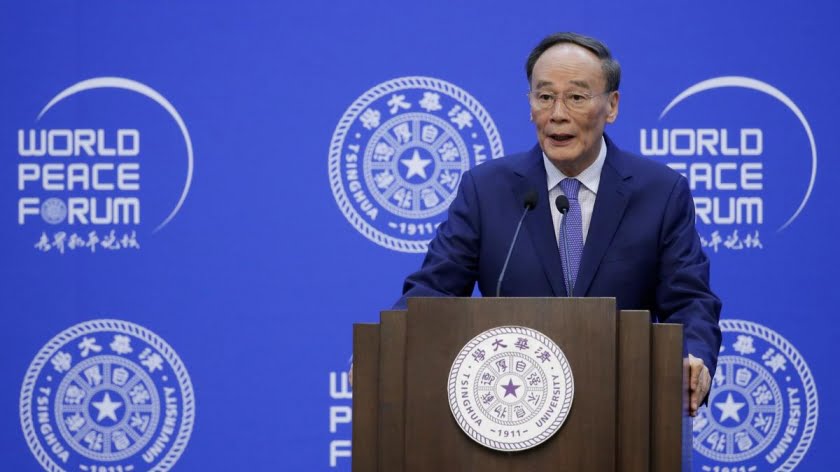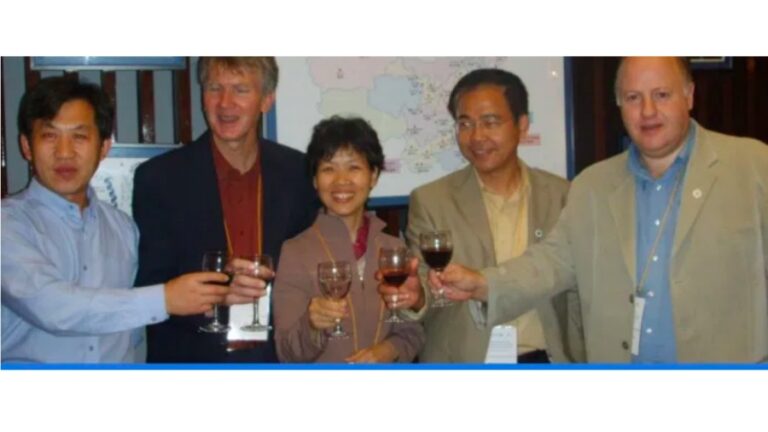Is Nepal a Source of Competition or Cooperation Between India and China?
From June 19 through 24 of this year, the prime minister of Nepal, K. P. Sharma Oli, accompanied by ministers of the economic block of the government was on an official visit to China, at the invitation of his Chinese colleague, Li Keqiag
The eminent Nepalese guest was received by PRC President Xi Jingping. As the joint statement from the end of the talks states, “In a warm and cordial atmosphere, through an in-depth exchange of views, the leaders of the two countries reached a wide-ranging mutual understanding concerning questions of further cementing their traditional friendship and increasing cooperation to their mutual benefit.”
Already, we have repeatedly noted Nepal’s role as a sort of test country where the whole system of relations between two Asian giants is being tested. In recent months, these tests have shown a highly important, positive trend, which emerged from these relations after and informal meeting of the leaders of both countries in April of this year, in the Chinese city of Wuhan.
This hopeful trend was confirmed during the next SCO summit in Qingdo on June 9-10, where India (along with Pakistan) participated for the first time as a full member of this authoritative organization. Only one and a half months after the discussions in Wuhan, the leaders both considered it necessary to hold a new meeting on the margins of the SCO summit. Both in China and India, the result have received equally positive assessments.
Again, we’ll point out how inappropriate this excessive euphoria is in connection with the positive trend mentioned above, as the different factors of the objective plans have not disappeared enough for Beijing and New Delhi’s wary attitudes towards one another. Long and patient work remains, during which there will almost certainly be periods of exacerbation, to reduce the impact of these factors on the current state of bilateral relations,
One of the main motives for this is the competition for influence on a number of countries within the Asian continent and the area of the Indian Ocean. Among these stands out Nepal—a small, poor county located in the Himalayas, which over the last two decades has been torn apart by the opposition of different political forces, periodically coming in the form of armed struggles. The political disasters have been compounded by a series of catastrophic earthquakes in April-May 2015.
All of this defines Nepal’s current leadership’s foreign policy strategy, targeting the construction of partnerships with countries that can provide real assistance in solving both the country’s immediate and its long-term socio-economic problems.
And despite its cultural-religious closeness with India, its essential dependence on it is found in various sectors of the economy (above all, in receiving energy resources); in the last ten years, there has been a sharp (exponential) increase in the PRC’s share of Nepal’s external turnover. China is already the country’s main external investor. Along with the increased economic presence, the level of political influence China holds over Nepal is inevitably growing.
At this point, it is appropriate to remember that the world’s second-place economic potential and its effective use to ensure national interests abroad is a general “brand” feature of Chinese foreign policy. This is the feature that has given China leading positions in Africa, successful penetration Latin America (the USA’s “backyard”), and in the countries of the greater Middle East.
The PRC’s convergence with Nepal is also facilitated by the ideological proximity of the ruling elites in both countries. We should note that following the results of the first parliamentary elections in almost 20 years held in Nepal at the end of last year, the “moderate” Communists led by Oli came to power for a third time.
However, the further development of Chinese-Nepalese relations is hindered by the lack of transport infrastructure linking both countries, which are separated by the highest mountain range in the world. The question of decisively overcoming this obstacle was at the center of the entire negotiating process between the Prime Minister of Nepal and PRC.
As follows from the joint statement, the two countries will have to communicate by means of railways and highways, air, and modern fiber optic cables. Additionally, China will help Nepal develop its internal transport infrastructure. There will be work carried out that will survey oil and gas fields and build energy reservoirs within the country’s territory.
According to commentary from experts and leading news agencies, in the Chinese-Nepalese negotiations, special attention was paid to the agreement to construct a trans-Himalayan railway connecting the capital of Nepal, Kathmandu, and the city of Shigatse, in the Tibetan autonomous region of China.
In turn, Shigzade is the terminal point of the world’s highest and most complex railroad, at over 2,000 kilometers long, built by the PRC over more than 30 years and linking TAP to the Qinghai province. The experience of its construction and the development of certain technologies used in locomotives and rolling stock, operating in high altitude conditions (the Qinghai-Tibet Railway rises to a height of over 5 km), will form the basis for implementing the Trans-Himalayan Railway project.
Both parties consider the future cross-border transport infrastructure as part of the context of the concept of the recreation of the NSP. According to the commentary of Chinese experts, this aspect of past negotiations is considered a suitable reason to include India in the continuation of the China-Nepal transport corridor further south, through its territory towards the coast of the Indian Ocean.
The experts previously mentioned suppose that now the ball is in India’s court. However, from the latter’s side there is still a noticeable enough, cautious reaction towards the fact of Chinese-Nepalese convergence.
In New Delhi, they was hardly some strong delight at inclusion in the joint statement of the thesis “about confirmation from the Nepalese side of permanent respect of the principal of a united China, which considers as its internal business issues of Tibet and Taiwan,” and also about the impossibility “of using the territory of Nepal for anti-Chinese goals.” However, formally and publically the leadership of India in relation to CPR is trying to follow the same principle.
Attention is drawn to the lack of direct or indirect signs of discussion of the theme of defense in the mutual relationship in the Chinese-Nepalese joint statement. And it’s an extra chance to confirm that China (generally and still) relies on economic instruments to secure its interests abroad.
For Nepal, in the process of developing relations with the CPR, raising this topic is not proper because it is extremely interested in sustaining reliable relationships with India as well. It’s impossible to disagree with the general assessment of the agency Reuters of the results of the last Chinese-Nepalese summit: the moderate communist Oli, at the post of new prime minister of Nepal, balances between China and India”.
The behavior of Nepalese leadership is driven by ancient Asian wisdom which is completely absent, for example, in Eastern European limitotrophes. Believing that you can endlessly sell spoiled products “without love” to one of the leading world players.







